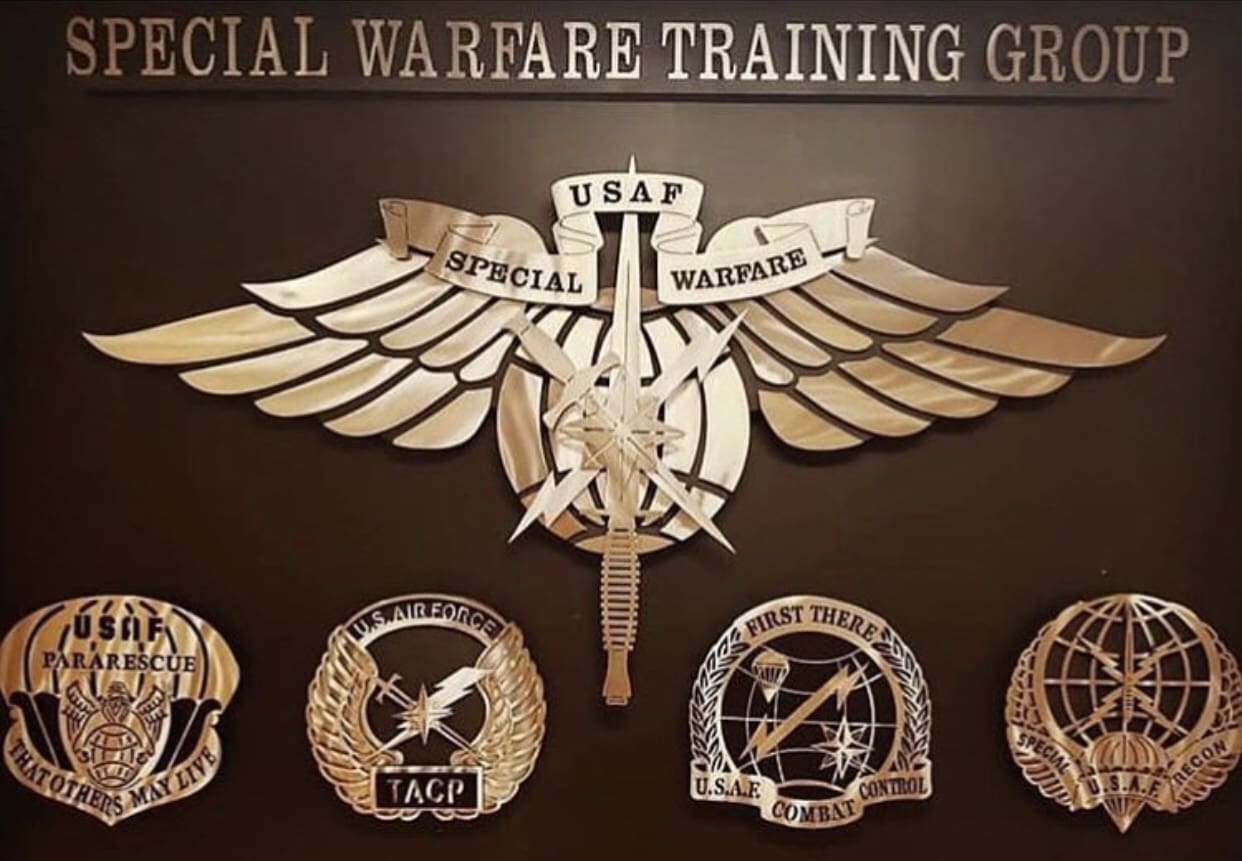ARLINGTON, Va. (AFNS) —
The Air Force recently consolidated and moved enlisted members of Air Force Special Warfare to new Air Force specialty codes to encompass AFSPECWAR operator, enabler and support specialties.
“The Air Force is invested in ensuring ready and lethal special warfare Airmen who operate primarily from the land domain to achieve air, space and cyberspace dominance for the joint force,” said Under Secretary of the Air Force Matthew P. Donovan. “These Airmen will provide the connective tissue to conduct multi-domain operations, even in the most difficult scenarios.”

As of Oct. 31, 2019, the new special warfare career field (1Z) includes the following AFSCs: pararescue (1Z1X1), combat control (1Z2X1), tactical air control party (1Z3X1) and special reconnaissance (1Z4X1). The special warfare enabler career field (1T) includes Airmen who train, integrate with and accompany operators and teams to enable additional capabilities, such as survival, evasion, resistance and escape specialist (1T0X1). In addition, a special warfare mission support reporting identifier (9ZXX1) was created for Airmen in specific positions that provide consultative leadership on all special warfare mission support enlisted matters.
The Air Force special warfare enterprise includes special tactics officers, combat rescue officers, TACP officers. It also includes enlisted combat controllers, pararescuemen, TACP, special reconnaissance, SERE specialists and combat mission support Airmen.
Changes for special warfare officer AFSCs are expected to go into effect in April 2020.
“The Airmen who choose these specialties are ordinary Americans with extraordinary grit and determination. Through incredible hard work and unparalleled discipline, they’ve forged themselves into teams of exceptional physical and mental strength. They are trained for the toughest missions in the most unforgiving environments,” said Air Force Vice Chief of Staff Gen. Stephen Wilson. “Their skills are more in demand today than ever. This movement to new AFSCs is just one of the ways that AFSPECWAR is responding to the evolving mix of threats that the Air Force confronts today and will in the future.”
In addition to the AFSC changes, Headquarters Air Force stood up an Air Force Special Warfare Directorate on Oct. 3. This new directorate is the focal point on the air staff that will provide senior-level integration and management to better organize, train, equip and employ special warfare Airmen on the battlefield through resourcing requirements and providing overarching career field guidance and direction. Previously, special tactics, Guardian Angel and TACP Airmen were spread out across seven major commands with different sources of funding, training and operational requirements.
“These communities have a long record of success on and off the battlefield. AFSPECWAR will continue to build on that legacy while aligning with the National Defense Strategy and evolving for future threats,” said Col. Thomas Palenske, director of the new Air Force Special Warfare directorate at the Pentagon. “Special warfare Airmen need to focus on acting as sensors, communicators and human weapons systems, enabling enhanced multi-domain command and control and air superiority from the ground in anti-access area denial environments. They will be better able to do that with the help of this new directorate as we develop and streamline career field management processes, policy and guidance to make their jobs easier.”
Within the last year, special warfare initiatives included the activation of the Special Warfare Training Wing at Joint Base San Antonio-Lackland, Texas, and the 330th Recruiting Squadron at JB San Antonio-Randolph. The 330th RCS focuses solely on recruiting Air Force special warfare operators and enablers while the SWTW centralizes training to meet the demands of the future battlefield.
“AFSPECWAR delivers ground-based access and placement to conduct preparation of the battlefield operations to the advantage of the Air Force to counter (anti-access/area denial) threats. Our Airmen’s unique capabilities enable air, space and cyber dominance from the ground,” Palenske said. “To be successful, the Air Force must leverage special warfare to execute its mission on an increasingly complex and contested battlefield.”
By Secretary of the Air Force Public Affairs


Waiting for the STO to come along and tell me that AFSW doesn’t include SERE.
Supposedly they are moving to all SW Officers being the same AFS. Have you heard anything more about that? I assume the following quote was alluding to that without providing any details.
“Changes for special warfare officer AFSCs are expected to go into effect in April 2020.”
Apparently, CORONA decided against the consolidation of GA and ST into new AFSW Wings in AFSOC, so there will continue to be a need for separate officers. Expect three shredouts: ALO, CRO, STO for officers.